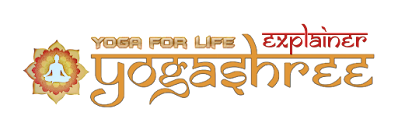Deep breathing can enhance your health and relax your mind. In different cultures, breathing is considered the essence of being. Breathing is only one instance of the constant polarity that exists in nature.
This is how yoga sees breath or prana. It is believed that the breath is the easiest means to communicate between our bodily systems and may then be therefore used to assist result in positive change.
Benefits Of Deep Breathing Before Sleep
Breathing is the only function that we are able to manage and not control. Because of this, we are able to use breathing to affect the involuntary functions of the nervous system that regulates blood pressure, heart rate, circulation, and digestion among others.
There is a yoga practice referred to as Pranayama and it actually means the control of life or energy. This makes use of breathing methods to change the energies inside the physique in the direction of well-being.
Deep breathing exercises are very good for accessing the parasympathetic nervous system which is a part of the autonomic nervous system responsible for the relaxation functions of the physique like sleep and digestion.
The reverse side of the autonomic nervous system is known as the sympathetic nervous system and that is the side responsible for the flight or struggle reflex related to motion in the body.
By simply sitting somewhere quiet and practicing deep breathing exercises you'll be able to promote the operation of the parasympathetic side of the autonomic nervous system which won't only help you feel relaxed however will also enhance wellbeing.
Two bouts of ten minutes of deep breathing (breathe in by your mouth and out by your nose) will show excellent results in less than two weeks.
Did you realize that breathing can be trained to have a positive impact or effect on the physique and health?
There are 2 methods to breathe:
- Through the chest
- Through the abdomen
How does determining the way you breathe can enhance your health and well-being?
Much of the blood flow happens within the lower lobes of the lungs. These areas have limited enlargement if you're a chest breather.
For a chest breather, much of the air exchange occurs on the prime of the lung tissue in the direction of the head.
And most chest breathers do more shallow breathing. This is due to chronic stress which led to the restriction of the connective and muscular tissue within the chest.
When this occurs, there's a decrease within the vary of motion of the chest wall. The chest doesn't increase and can't increase the way in which it's supposed to be.
Shallow breathing results in a poor supply of nutrients to the physique as much less oxygen is transferred to the blood. But never fret.
Deep breathing might be discovered and with common and constant practice, you may be breathing from the stomach even when you are asleep.
4 Types of Deep Breathing Exercises
- Abdominal Breathing
- Progressive Muscle Relaxation
- Equal Breathing or Sama Vritti Pranayama
- Guided Visualization
- Abdominal Breathing Exercise
How to do it:
Sit comfortably with your back straight. Place one hand in your stomach and the opposite hand in your chest. Take a deep breath.
As your diaphragm descends, the hand in your abdomen ought to rise, whereas the hand in your chest ought to transfer very little.
Exhale slowly by your mouth, pushing out as much air as possible as you squeeze your belly muscles.
Each inhalation and exhalation must be gradual and steady, lasting an average of 10 seconds from beginning to end. (You might need to time yourself on the outset to make sure that you're taking between 6 and 10 deep breaths per minute.)
The purpose must be to finish a minimum of ten minutes of deep abdominal breathing every day.
If you will have a hard time inhaling a seated position at first, you'll be able to lie on the ground and apply the approach earlier than sitting up.
When to do it:
Abdominal breathing is arguably a crucial deep breathing approach as a result of it teaches us to breathe another way.
Those who've never tried it are sometimes stunned by simply how exhausting it's to breathe out and in from the stomach with deep, slow breaths, in comparison with taking fast, shallow ones from the upper chest.
Because it delivers loads of oxygen in a short time period, belly breathing offers us energy and helps improve concentration.
- Progressive Muscle Relaxation exercise
How to do it:
Back problems, muscle spasms, common aches and pains, and even severe accidents are all common signs of this unhealthy habit.
We can tackle the difficulty in a way that combines deep breathing with muscle pressure and relaxation.
Best way to do it.
Dressed in loose, comfortable clothes, take a seat in a quiet place. Remove your shoes and start to breathe out and in with slow, deep breaths.
Once relaxed, close your eyes and give attention to tensing then enjoyable a specific muscle for a couple of seconds at a time.
Most beginners start with one of their fingers or feet, then transfer on to different sore or overworked areas.
As you progress, it would be best to tense specific muscle mass a bit tougher for a minimum of ten seconds at a time.
Although not the focus of the approach, your breathing ought to stay slow and deep all through. For many newcomers, it's useful to depend on breaths whereas tensing and relaxing each muscle.
Experts recommend inhaling three to 5 instances by the nose whereas the muscles are tensed, then exhaling three to 5 instances by the mouth upon release.
When to do it:
While it's true that more skilled practitioners can complete an effective progressive relaxation session nearly anywhere - at home, even on the street. Most tyros want a quiet place in the place they'll relax and give attention to every muscle.
It can be necessary to notice that tensing muscles too hard and/or too long may end up in dizziness, which isn't the purpose of the approach.
So for those who expertise this unpleasant side-impact, you're pushing yourself too exhausting. Slow down and do not forget that leisure, not lightheadedness is the aim of progressive relaxation.
- Equal Breathing or Sama Vritti Pranayama
How to do it:
Like most yoga methods, equal breathing is designed to calm the physique and focus the mind. Practiced by each beginner and yogis alike, it begins in a comfortable, cross-legged seated place reminiscent of Sukhasana.
You should then shut your eyes and focus on your breathing. Do not change anything at first, however, simply observe you're natural breathing rhythm.
Because most of us take fast, shallow breaths that aren't conducive to relaxation during our waking hours, odds are it's essential to slow your breathing down a bit.
When to do it:
You do not need to be in a yoga studio to practice pranayama, which is the artwork and science of controlled breathing in yoga.
In truth, there are over 50 pranayama breathing methods and forms, including Sama Vritti. Praised by medical professionals for its stress-relieving benefits, equal breathing is especially efficient before bedtime.
- Guided Visualization
How to do it:
A basic song instructs us to "accentuate the positive and eliminate the negative" What's one of the best ways to do exactly that?
We start by closing our eyes, breathing deeply in and out, and focusing on optimistic images to replace the negatives ones we're bombarded with on a daily basis.
For beginners, it's usually helpful to listen to a soothing recording, such as nature sounds, to help the anodyne pictures to come more freely.
When to do it:
Anywhere you'll be able to close your eyes and block out the world for a while.
All of the breathing methods we've got mentioned at this time can be used to invoke the comfort response.
Breathing exercise benefits
The final purpose of managed breathing, this natural state of profound rest helps us take care of stress and anxiousness in a healthy way.
Compared to pills, it delivers constant outcomes without the risk of dependence and different unwanted side effects. And all you need to do is breathe!

















No comments:
Post a Comment
Thanks for reading my blog